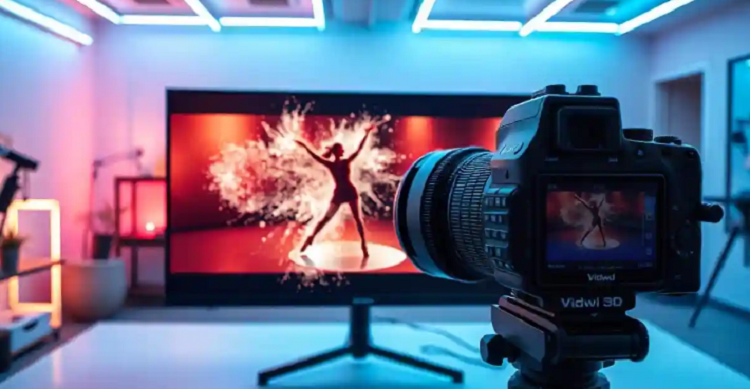In today’s digital world, content creation is no longer limited to just text or static images. With the Because artificial intelligence (AI) has grown, creators now have access to powerful tools that can turn simple pictures into interesting videos. One of the most popular trends is the use of image to video AI free tools that allow anyone—from social media users to marketers—to create moving, lifelike content without needing advanced technical skills. Among these innovations, talking photo technology has caught significant attention due to its ability to bring still images to life with speech and movement.
Table of Contents
What is Image to Video AI Free?
The term “image to video AI free” describes downloadable or web-based applications that employ artificial intelligence to transform still photos into moving videos without costing customers. These programs examine an image’s background, face expressions, and facial structure before applying animation effects to create the illusion of movement. In many cases, users can also add voiceovers or use text-to-speech technology to make the image “talk.”
A lot of different businesses use this cutting-edge technology. Whether it’s to create short-form social media videos, marketing content, educational material, or even personalized greeting cards, these tools are empowering people to engage their audience like never before.
Enter Talking Photo: Make Images Speak
One of the most exciting developments in this area is the talking photo feature. This technology allows users to upload a photo and make it appear as though the person in the image is speaking. With just a few clicks, users can create lifelike animations of people talking, blinking, and showing emotions. It can be used to animate historical figures, family photos, characters, or even fictional avatars.
The process usually involves these steps:
- Upload a clear facial image.
- Select or record audio input.
- Use AI to map the facial features to the audio.
- Generate a video where the photo “talks” in sync with the audio.
Such tools are useful for content creators, educators, storytellers, and even brands that want to create memorable interactions with their audience.
Why using image to video AI tools is a good idea
There are several reasons to use free image-to-video AI platforms:
- Easy to use: You don’t need expensive software or skilled editing skills.
- Speed: Videos can be generated within minutes.
- Creativity: Adds a new layer of creativity to traditional content formats.
- Cost-Effective: Perfect for small businesses, freelancers, or anyone on a tight budget.
With talking photo tools, users can create personalized video messages, animated portraits, or even fun memes that grab attention on platforms like TikTok, Instagram, and YouTube Shorts.
Best Practices for Using Talking Photo AI
To get the most out of these tools, keep the following tips in mind:
- Use high-quality images: The clearer the photo, the better the AI can animate facial features.
- Pick suitable voiceovers: A natural-sounding voice enhances realism.
- Ensure proper lighting: Photos with well-lit faces yield better results.
- Keep content engaging: Use humor, emotion, or storytelling to keep viewers interested.
Ethical Considerations
AI technologies that can convert images to video and talk photos are fascinating, but they also present moral dilemmas. Deepfake concerns, misinformation, and unauthorized use of someone’s image are issues that developers and users must consider. Always make sure to use your own images or get permission from the person in the photo, especially if you plan to publish the video.
Where to Try These Tools
Many platforms now offer image to video AI free of charge, at least for basic use. One of the notable examples includes vidwud.com, which provides AI-based face swap, image animation, and talking photo generation features.Both novice and seasoned creators will find this platform easy to utilize.
Other tools you can explore include:
- D-ID
- HeyGen
- Deep Nostalgia
- Synthesia (limited free options)
- TokkingHeads
Future of Image-to-Video AI
The future is bright for AI-generated video content. With improvements in voice cloning, real-time rendering, and facial expression recognition, we can expect even more realistic and versatile outputs. In the coming years, you might be able to hold a video conversation with a historical figure or send a birthday message from an animated photo of a loved one.
Final Thoughts
Image to video AI free platforms and talking photo technologies are changing how we communicate and create. By allowing static images to speak, smile, and engage, these tools open up a new world of storytelling possibilities. Whether you are a content creator, marketer, teacher, or just someone who loves to experiment with AI, this is your moment to turn your photos into something truly magical.

